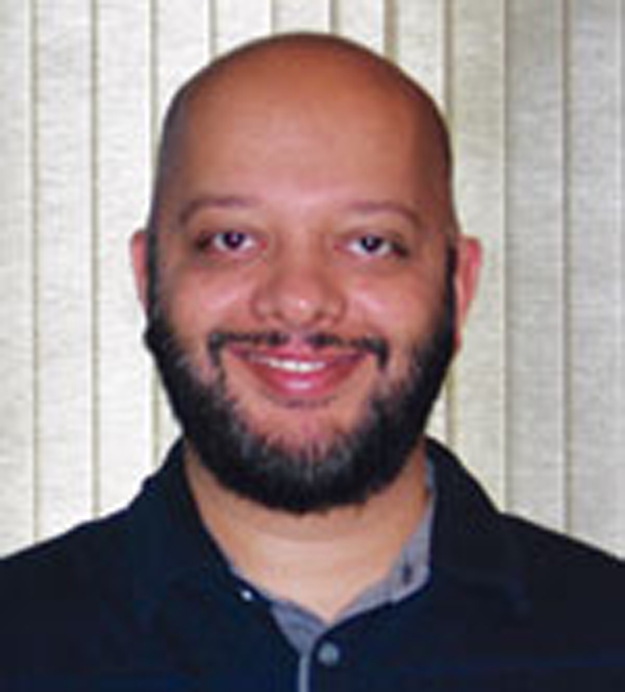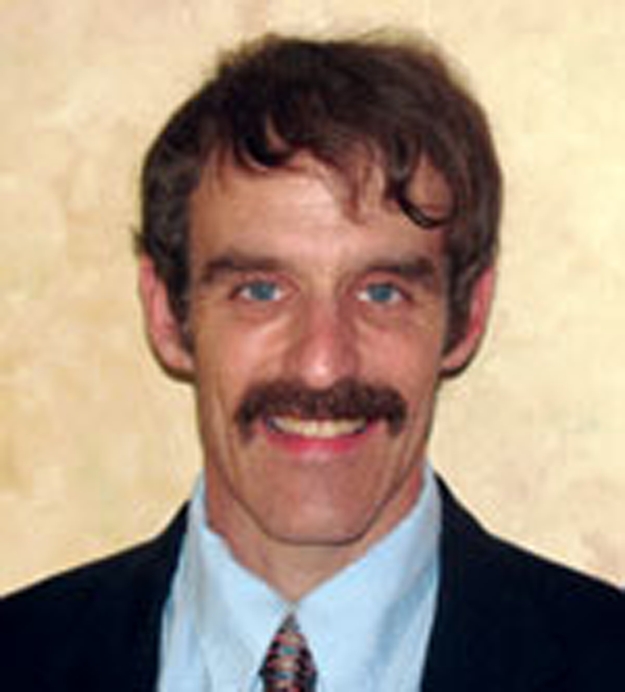During the past decade, thousands of patients with a variety of diseases unresponsive to conventional treatment have gone abroad to receive stem-cell therapies. This phenomenon, commonly referred to as ‘stem-cell tourism’, raises significant ethical concerns, because patients often receive treatments that are not only unproven, but also unregulated, potentially dangerous or even fraudulent (Kiatpongsan & Sipp, 2009; Lindvall & Hyun, 2009). Stem-cell clinics have sprung up in recent years to take advantage of desperate patients who have exhausted other alternatives (Ryan et al, 2010). These clinics usually advertise their services directly to consumers through the Internet, make extravagant claims about the benefits, downplay the risks involved and charge hefty fees of US $20,000 or more for treatments (Lau et al, 2008; Regenberg et al, 2009).
Stem-cell tourism is regarded as ethically problematic because patients receive unproven therapies from untrustworthy sources
With a few exceptions—such as the use of bone-marrow haematopoietic cells to treat leukaemia—novel stem-cell therapies are often unproven in clinical trials (Lindvall & Hyun, 2009). Even well-proven therapies can lead to tumour formation, tissue rejection, autoimmunity, permanent disability and death (Gallagher & Forrest, 2007; Murphy & Blazar, 1999). The risks of unproven and unregulated therapies are potentially much worse (Barclay, 2009).
In this commentary, we argue that stem-cell scientists have a unique and important role to play in addressing the problem of stem-cell tourism. Stem-cell scientists should carefully examine all requests to provide cell lines and other materials, and share them only with responsible investigators or clinicians. They should require recipients of stem cells to sign material transfer agreements (MTAs) that describe how the cells may be used, and to provide documentation about their scientific or medical qualifications.
In discussing these ethical and regulatory issues, it is important to distinguish between stem-cell tourism and other types of travel to receive medical treatment including stem-cell therapy. Stem-cell tourism is regarded as ethically problematic because patients receive unproven therapies from untrustworthy sources. Other forms of travel usually do not raise troubling ethical issues (Lindvall & Hyun, 2009). Many patients go to other countries to receive proven stem-cell therapies—such as haematopoietic cells to treat leukaemia—from responsible physicians. Other patients obtain unproven stem-cell treatments by participating in scientifically valid, legally sanctioned clinical trials, or by receiving ethically responsible, innovative medical care (Lindvall & Hyun, 2009). In some cases, patients need to travel because the therapy is approved in only some countries; by way of example, on 1 July, Korea was the first country that approved the clinical use of adult stem cells to treat heart attack victims (Heejung & Yi, 2011).
…even when regulations are in place, unscrupulous individuals might still evade these rules
Any medical innovation is ethically responsible when it is based on animal studies or other research that guarantee evidence of safety and clinical efficacy. Adequate measures must also be taken to protect patients from harm, such as clinical monitoring, follow-up, exclusion of individuals who are likely to be harmed or are unlikely to benefit, use of only clinical-grade stem cells, careful attention to dosing strategies and informed consent (Lindvall & Hyun, 2009).
Many of the articles examining the ethics of stem-cell tourism have focused on the need for more regulatory oversight and education to prevent harm (Lindvall & Hyun, 2009; Caplan & Levine, 2010; Cohen & Cohen, 2010; Zarzeczny & Caulfield, 2010). We agree that additional regulations are needed, as there is little oversight of stem-cell research or therapy at present. Although most countries have regulations for conducting research with human subjects, as well as medical malpractice and licensing laws, these provide general guidance and do not directly address stem-cell therapy.
Regulations have significant limitations, however. First, regulations apply intra-nationally, not internationally. If a country passes laws designed to oversee therapy and research, these laws would not apply in another nation. Physicians and investigators who do not want to adhere to these rules can simply move to another country that has a permissive legal environment. International agreements can help to close this regulatory gap, but there will still be countries that do not accept or abide by these agreements. Second, even when regulations are in place, unscrupulous individuals might still evade these rules (Resnik, 1999).
Educating patients about the risks of unproven therapies can also help to address the problem of stem-cell tourism. However, education too has significant limitations, since many people will remain ignorant of the dangers of unproven therapies, or they will simply ignore warnings and prudent advice. For many years, cancer patients have travelled to foreign countries to receive unconventional and unproven treatments, despite educational campaigns and media reports discussing the dangers of these therapies. Since the 1970s, thousands of patients have travelled to cancer clinics in Mexico to receive medical treatments not available in the USA (Moss, 2005).
Education for physicians on the dangers of unproven stem-cell therapies can be helpful, but this strategy also has limitations, since many will not receive this education or will choose to ignore it. Additionally, responsible physicians might still find it difficult to persuade their patients not to receive an unproven therapy, especially when conventional treatments have failed. The history of cancer treatment offers important lessons here, since many oncologists have tried, unsuccessfully, to convince their patients not travel to foreign countries to receive questionable treatments (Moss, 2005).
Since regulation and education have significant shortcomings, it is worth considering another strategy for dealing with the problem of stem-cell tourism, one that focuses on the social responsibilities of stem-cell scientists.
Many codes of ethics adopted by scientific associations include provisions relating to social responsibilities (Shamoo & Resnik, 2009). For example, the Code of Ethics of the American Society for Biochemistry and Molecular Biology states that “investigators will promote and follow practices that enhance the public interest or well-being” (American Society of Microbiology, 2011). Social responsibilities in science include an obligation to avoid causing harm and an obligation to benefit the public (Shamoo & Resnik, 2009).
…education too has significant limitations, since many people will remain ignorant of the dangers of unproven therapies, or they will simply ignore warnings and prudent advice
There are two distinct rationales for social responsibility. First, scientists should be accountable to the public since the public provides scientists with funding, facilities and staff (Shamoo & Resnik, 2009). Second, stem-cell scientists are uniquely positioned to exercise their social responsibilities and take effective action pertaining to stem-cell tourism. They understand the science behind stem-cell research, including the potential for harm and the likely clinical efficacy. This knowledge can be used to evaluate the scientific validity of the different uses of stem cells, especially clinical uses. Stem-cell scientists also have control over cell lines and other materials that they may or may not choose to share with other researchers or physicians.
Many of the private clinics that offer stem-cell treatments are relatively small and often depend on acquiring resources from scientists working in the field. The materials they might require could include adult, embryonic and fetal stem-cell lines; vectors that can be used to induce pluripotency in isolated adult cells; genes, DNA and RNA sequences; antibodies; purified protein products, such as growth factors; and special cocktails, media or extracellular matrices to culture specific stem-cell types.
Social responsibilities in science include an obligation to avoid causing harm and an obligation to benefit the public
One way in which stem-cell scientists can help to address the problem of stem-cell tourism is to refuse to share cell lines or other materials with physicians or investigators whom they believe might be behaving irresponsibly. To decide whether someone who requests materials is a responsible individual, stem-cell scientists should ask recipients to supply documentation, such as a CV, website, a research or clinical protocol, or clinical trial number, as evidence of their work and expertise in stem cells. This would ensure that the stem cells and other materials are going to be used in the course of responsible biomedical research, a legally sanctioned clinical trial, or in responsible medical innovation. If the recipients provide insufficient documentation, scientists should refuse to honour their requests for materials.
Stem-cell scientists should also require recipients to sign MTAs that describe what will be done with the material supplied. MTAs are contracts governing the transfer of materials between organizations and typically include a variety of terms and conditions, such as the purposes for which the materials may be used—commercial or academic research, for example—modification of the materials, transfers to third parties, intellectual property rights, and compliance with legal, regulatory and other policies (Rodriguez, 2005).
To help address the problem of stem-cell tourism, MTAs should state whether the materials will be used in humans, and under what conditions. If the stem cells are not clinical grade, the MTA should state that they will not be transplanted into humans, unless the recipients have a well-developed and legally sanctioned procedure—approved by the Food and Drug Administration or other relevant agency—for verifying the quality of the cells and performing the necessary changes to make them acceptable for human use. For example, the recipients could test the cells for viral and bacterial infections, mutations, chemical impurities or other factors that would compromise their clinical utility in an attempt to develop clinical grade cell lines.
In addition, the MTA could stipulate that scientists must follow the ethical Guidelines for Clinical Translation of Stem Cells set forth by the International Society for Stem Cell Research (Hyun et al, 2008). These guidelines set forth various preclinical and clinical conditions for stem-cell interventions. Describing such conditions might help to deter unscrupulous individuals from using stem cells for scientifically and ethically questionable practices. By evaluating a recipient's qualifications and intended uses of stem-cell lines and other reagents, scientists demonstrate social responsibility and uphold public trust when sharing materials.
Stem-cell scientists also have control over cell lines and other materials that they may or may not choose to share with other researchers or physicians
Since an MTA is a type of contract between institutions, there is legal recourse if it is broken. A plaintiff could sue a defendant that violates an MTA for breach of contract. Also, if the aggrieved party is a funding agency, it could withhold research funding from the offending party. The onus is on the plaintiff—the scientist and scientific organization providing the materials—to file a lawsuit against the defendants for breach of contract and this requires the scientist or others in the organization to follow-up and ensure that the materials transferred are being used in compliance with the conditions set forth in the MTA.
Some might object to our proposal because it violates the principle of scientific openness, which is an integral part of the ethos of science (Shamoo & Resnik, 2009). Scientists have an obligation to share data, reagents, cell lines, methods and other research tools because sharing is vital to the progress of science. Many granting agencies and journals also have policies that require scientists to make data and materials available to other scientists on request (Shamoo & Resnik, 2009).
Although openness is vital to the ethical practice of science, it can be superseded by other important factors, such as protecting the privacy and confidentiality of human research subjects, safeguarding proprietary or classified research, securing intellectual property or scientific priority, or preventing bioterrorism (Shamoo & Resnik, 2009). We consider tackling the problem of stem-cell tourism to be a sufficiently important reason for refusing to share research materials in some situations.
Although openness is vital to the ethical practice of science, it can be superseded by other important factors…
Some might also object to our proposal on the grounds that it places unnecessary burdens on already overworked scientists, or that unscrupulous scientists and physicians will find alternative ways to obtain stem cells, even if investigators refuse to share them.
We recognize the need to avoid burdening researchers unnecessarily with administrative work, but we think that verifying the qualifications of a recipient and reviewing a protocol is a reasonable burden. If principal investigators do not wish to shoulder this responsibility, they can ask a postdoctoral fellow or another senior member of the laboratory or faculty to help them. Far from being a waste of time and effort, taking some simple steps to determine whether requests for stem cells come from responsible physicians or investigators can be an important part of the scientific community's response to stem-cell tourism.
A month before his death in 1963, former US President John F. Kennedy (1917-1963) made an address at the Centennial Convocation of the National Academy of Sciences in which he said: “If scientific discovery has not been an unalloyed blessing, if it has conferred on mankind the power not only to create but also to annihilate, it has at the same time provided humanity with a supreme challenge and a supreme testing.” Stem-cell scientists can rise to this challenge and address the problem of stem-cell tourism by ensuring that the products of their research are controlled responsibly and shared wisely with genuine investigators or clinicians through the use of MTAs. Doing so should help to deter fraudulent scientists or physicians from exploiting patients who travel to foreign countries in their desperate search for cures.

Zubin Master

David B Resnik
Acknowledgments
This article was supported, in part, by the National Institutes of Health (NIH), National Institute of Environmental Health Sciences (NIEHS); the Stem Cell Network; and the Canadian Cancer Stem Cell Consortium. Z.M. is also affiliated with the Sprott Centre for Stem Cell Research and the Ottawa Hospital Research Institute, University of Ottawa. The work presented here does not represent the views of the NIH, NIEHS, Health Canada, or the Canadian or US governments.
Footnotes
The authors declare that they have no conflict of interest.
References
- American Society of Microbiology (2011) Code of Ethics. http://www.asbmb.org/Page.aspx?id=70&terms=ethics [Google Scholar]
- Barclay E (2009) Stem-cell experts raise concerns about medical tourism. Lancet 373: 883–884 [DOI] [PubMed] [Google Scholar]
- Caplan A, Levine P (2010) Hope, hype, and help: ethically assessing the growing market in stem cell therapies. Am J Bioeth 10: 24–25 [DOI] [PubMed] [Google Scholar]
- Cohen CB, Cohen PJ (2010) International stem cell tourism and the need for effective regulation part I: stem cell tourism in Russia and India: clinical research, innovative treatment, or unproven hype? Kennedy Inst Ethics J 20: 27–49 [DOI] [PubMed] [Google Scholar]
- Gallagher G, Forrest DL (2007) Second solid cancers after allogeneic hematopoietic stem cell transplantation. Cancer 109: 84–92 [DOI] [PubMed] [Google Scholar]
- Heejung J, Yi H (2011) South Korea back in stem cell spotlight with new treatment. Reuters, 7 July. www.reuters.com [Google Scholar]
- Hyun I et al. (2008) New ISSCR guidelines underscore major principles for responsible translational stem cell research. Cell Stem Cell 3: 607–609 [DOI] [PubMed] [Google Scholar]
- Kiatpongsan S, Sipp D (2009) Medicine. Monitoring and regulating offshore stem cell clinics. Science 323: 1564–1565 [DOI] [PubMed] [Google Scholar]
- Lau D, Ogbogu U, Taylor B, Stafinski T, Menon D, Caulfield T (2008) Stem cell clinics online: the direct-to-consumer portrayal of stem cell medicine. Cell Stem Cell 3: 591–594 [DOI] [PubMed] [Google Scholar]
- Lindvall O, Hyun I (2009) Medical innovation versus stem cell tourism. Science 324: 1664–1665 [DOI] [PubMed] [Google Scholar]
- Moss RW (2005) Patient Perspectives: Tijuana cancer clinics in the post-NAFTA era. Integr Cancer Ther 4: 65–86 [DOI] [PubMed] [Google Scholar]
- Murphy WJ, Blazar BR (1999) New strategies for preventing graft-versus-host disease. Curr Opin Immunol 11: 509–515 [DOI] [PubMed] [Google Scholar]
- Regenberg AC, Hutchinson LA, Schanker B, Mathews DJ (2009) Medicine on the fringe: stem cell-based interventions in advance of evidence. Stem Cells 9: 2312–2319 [DOI] [PubMed] [Google Scholar]
- Resnik DB (1999) Privatized biomedical research, public fears, and the hazards of government regulation: lessons from stem cell research. Health Care Anal 7: 273–287 [DOI] [PubMed] [Google Scholar]
- Rodriguez V (2005) Material transfer agreements: open science vs. proprietary claims. Nat Biotechnol 23: 489–491 [DOI] [PubMed] [Google Scholar]
- Ryan KA, Sanders AN, Wang DD, Levine AD (2010) Tracking the rise of stem cell tourism. Regen Med 5: 27–33 [DOI] [PubMed] [Google Scholar]
- Shamoo AS, Resnik DB (2009) Responsible Conduct of Research, 2nd edn. New York, USA: Oxford University Press [Google Scholar]
- Zarzeczny A, Caulfield T (2010) Stem cell tourism and doctors' duties to minors—a view from Canada. Am J Bioeth 10: 3–15 [DOI] [PubMed] [Google Scholar]


